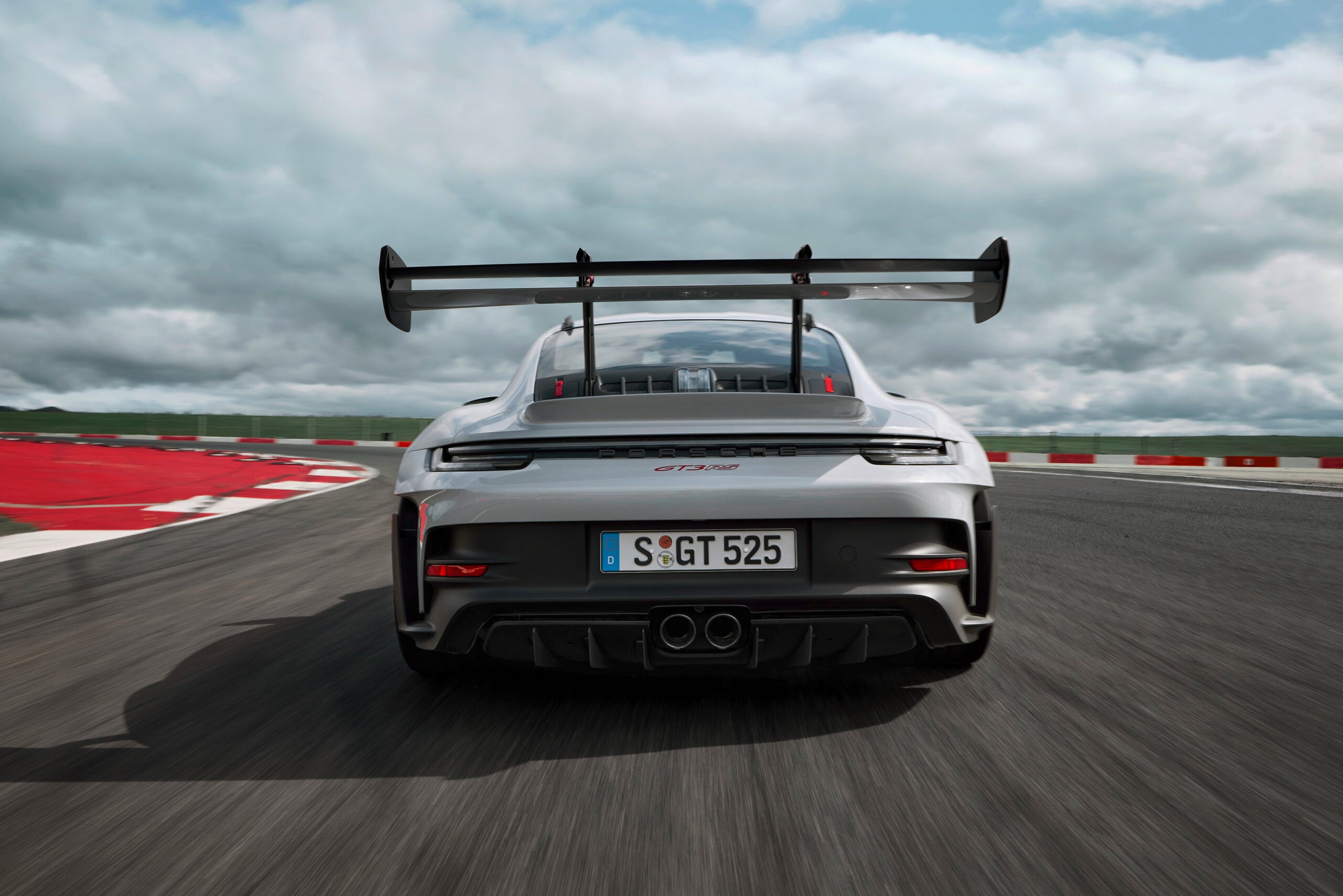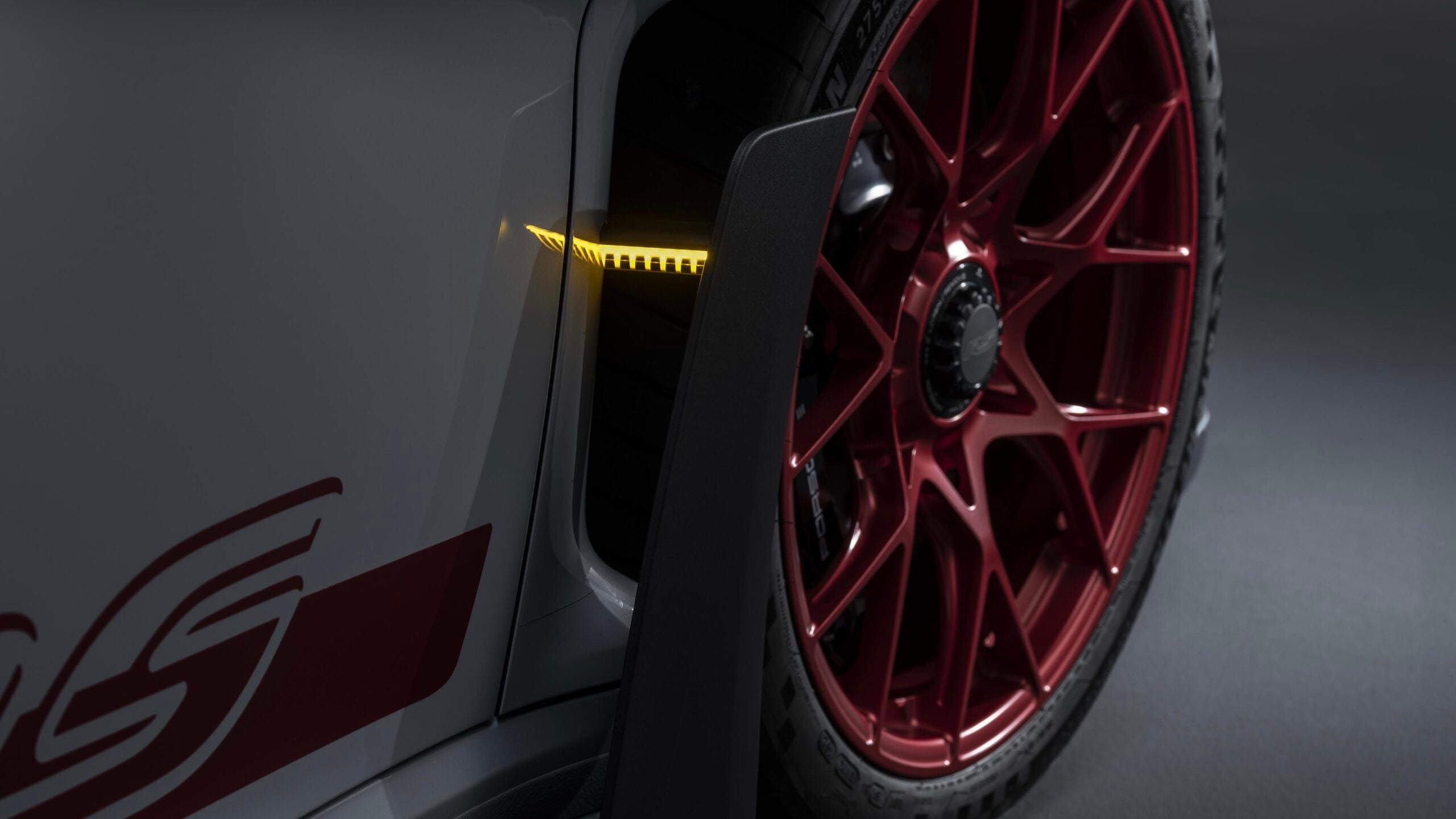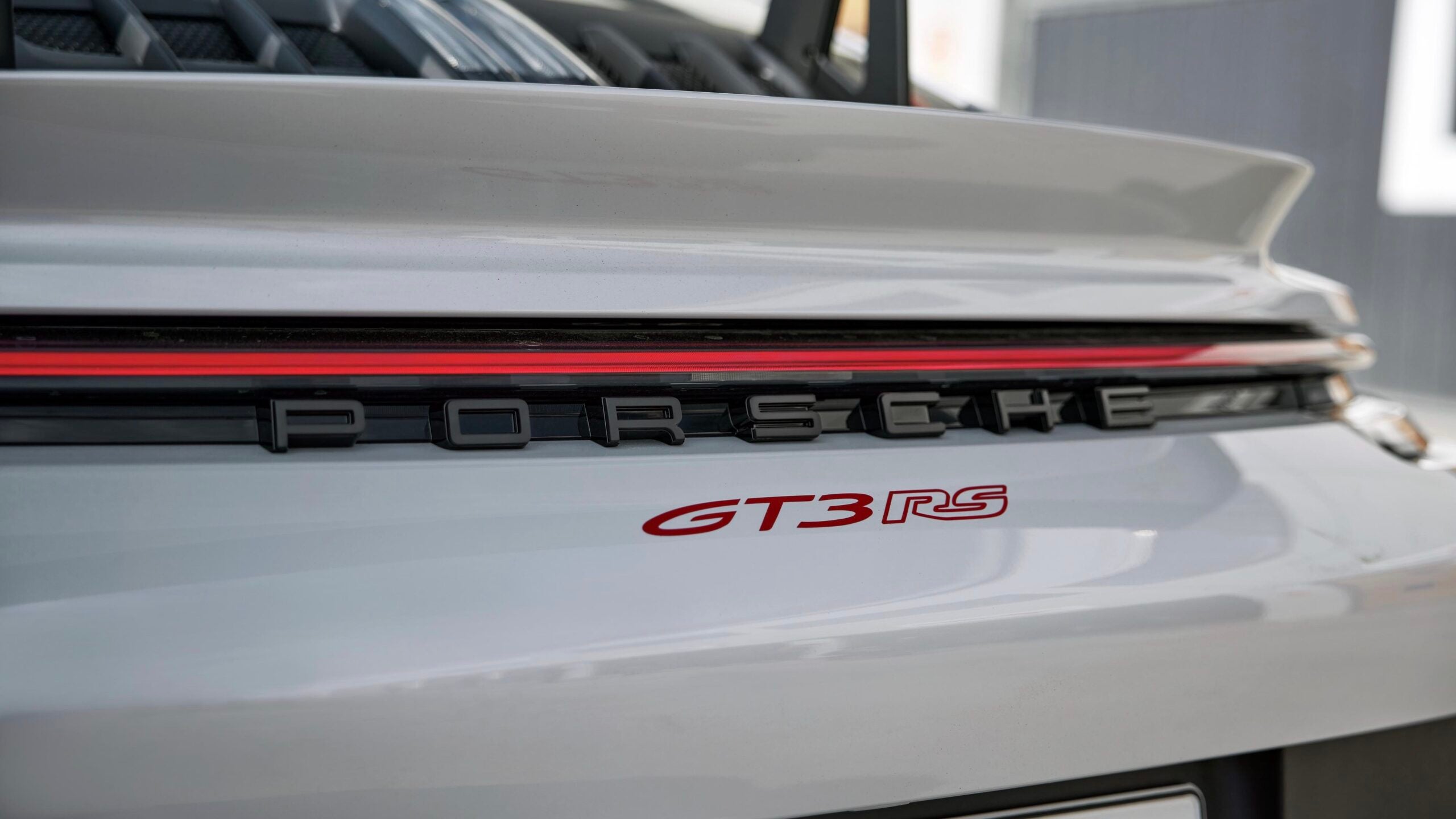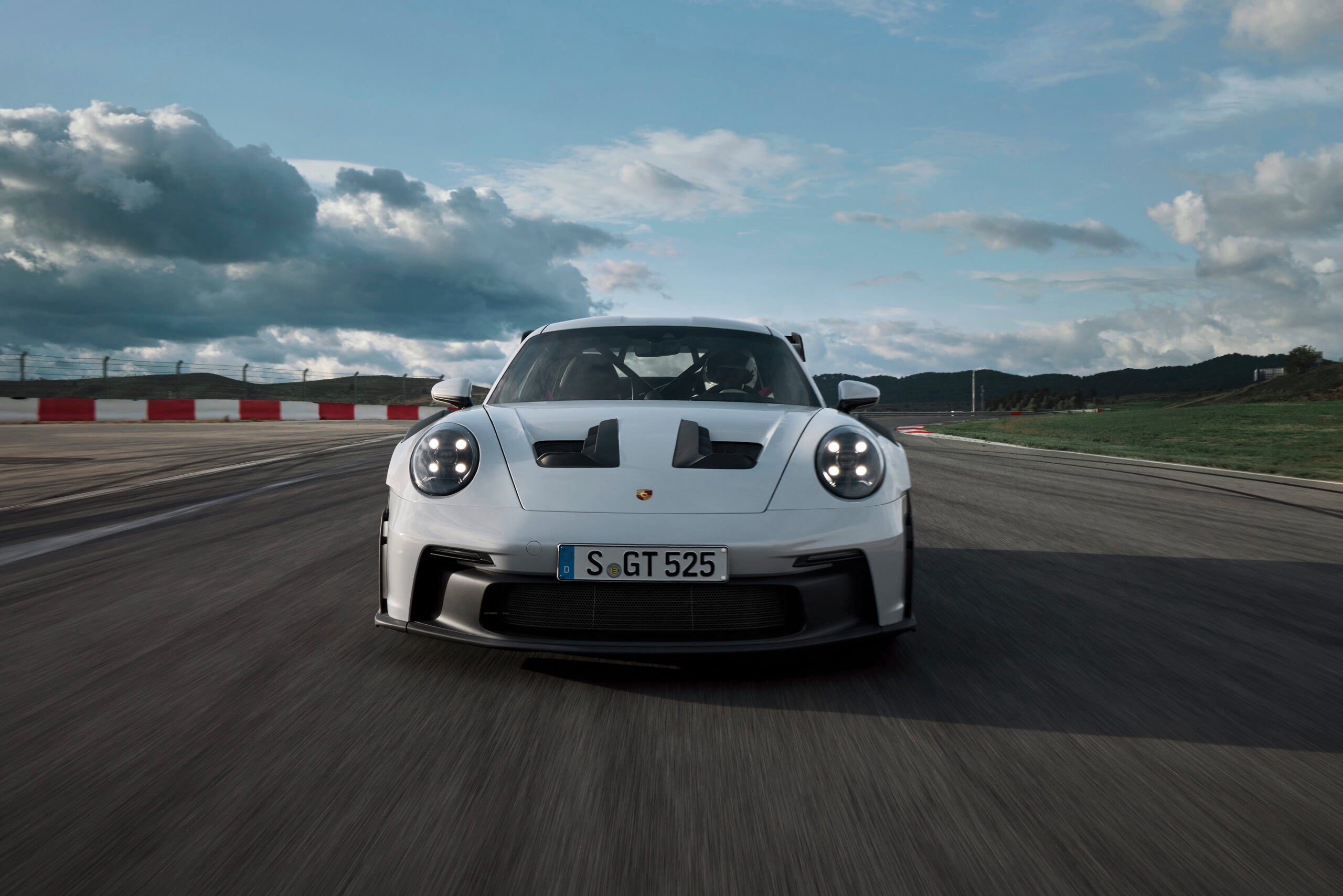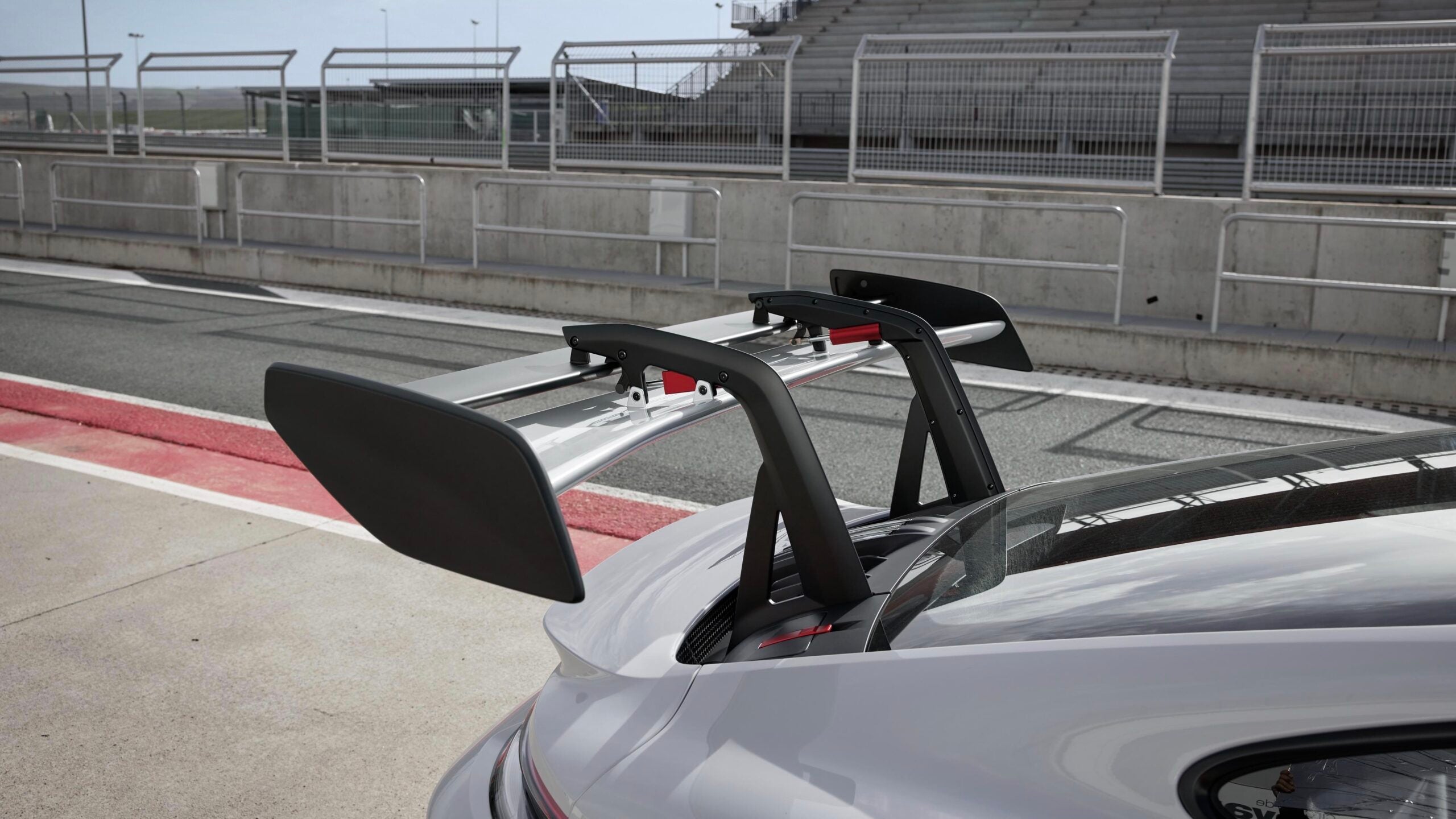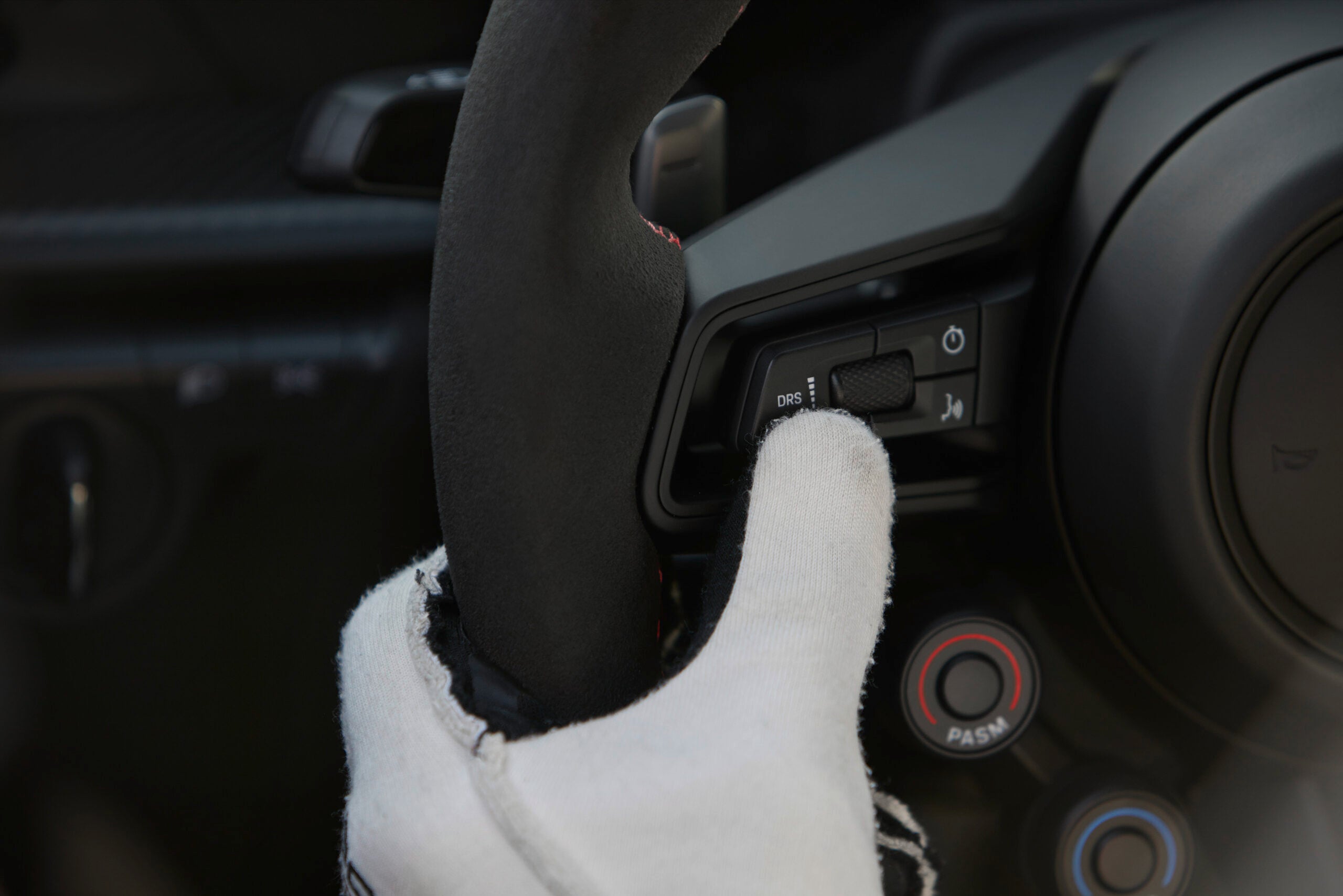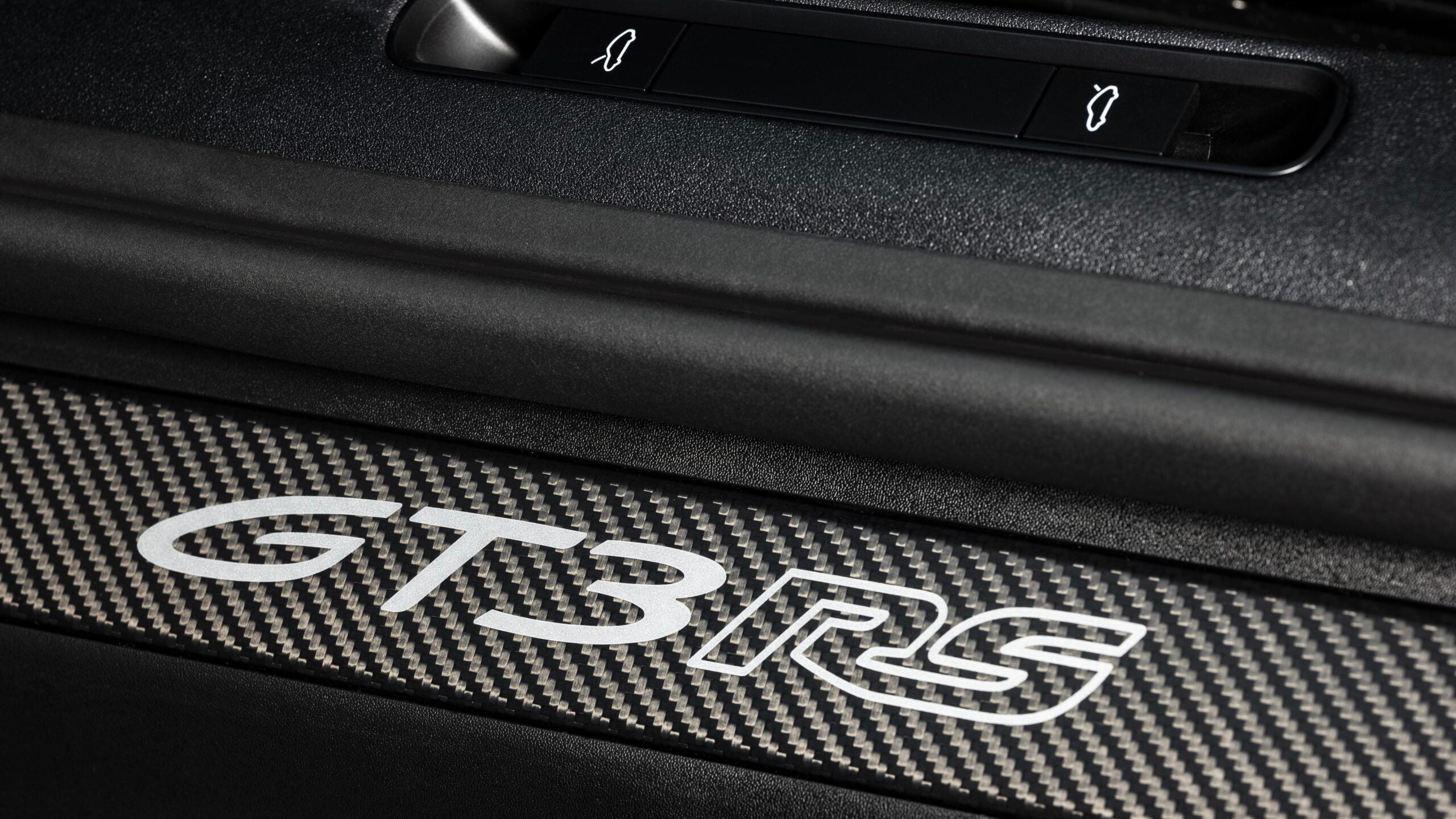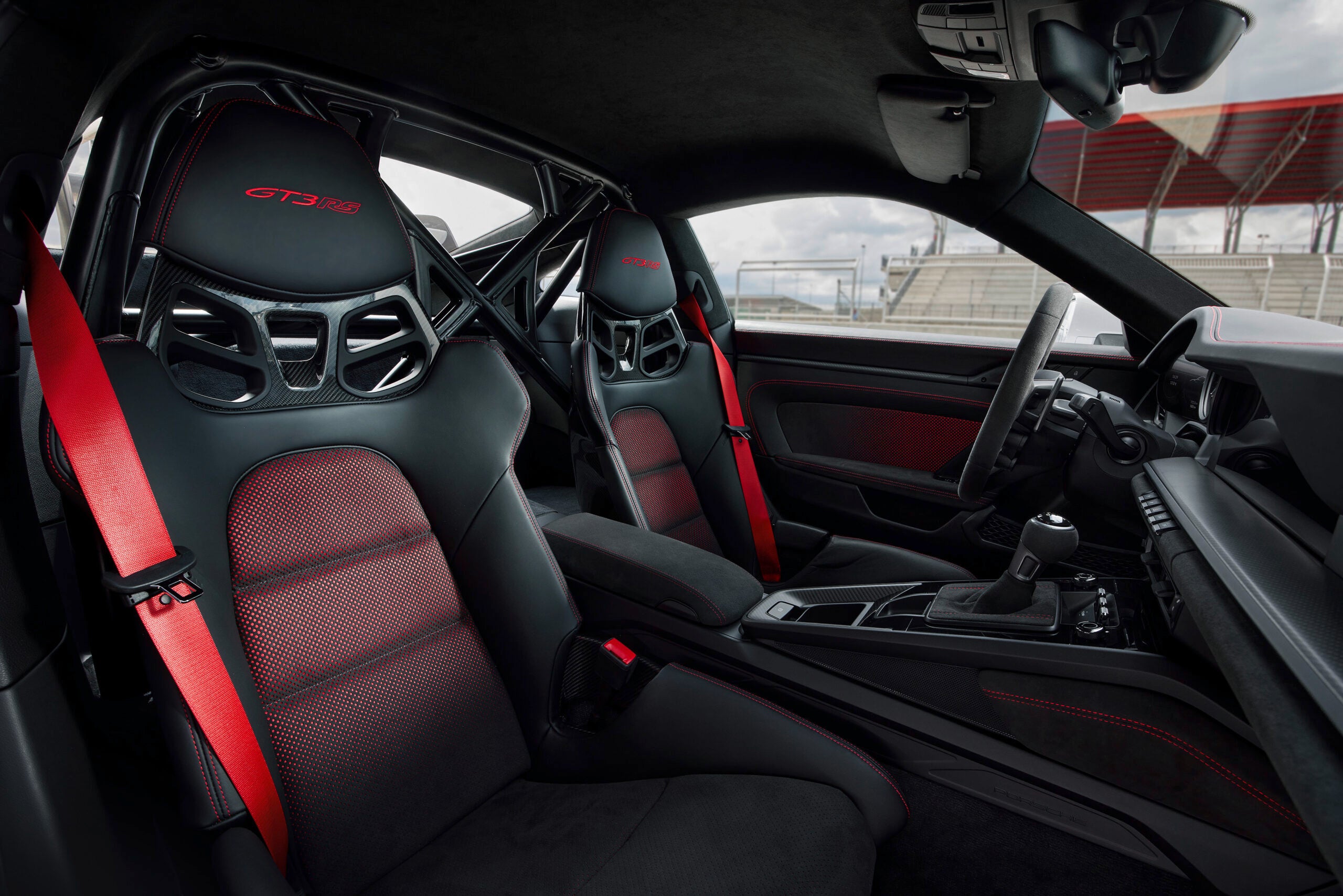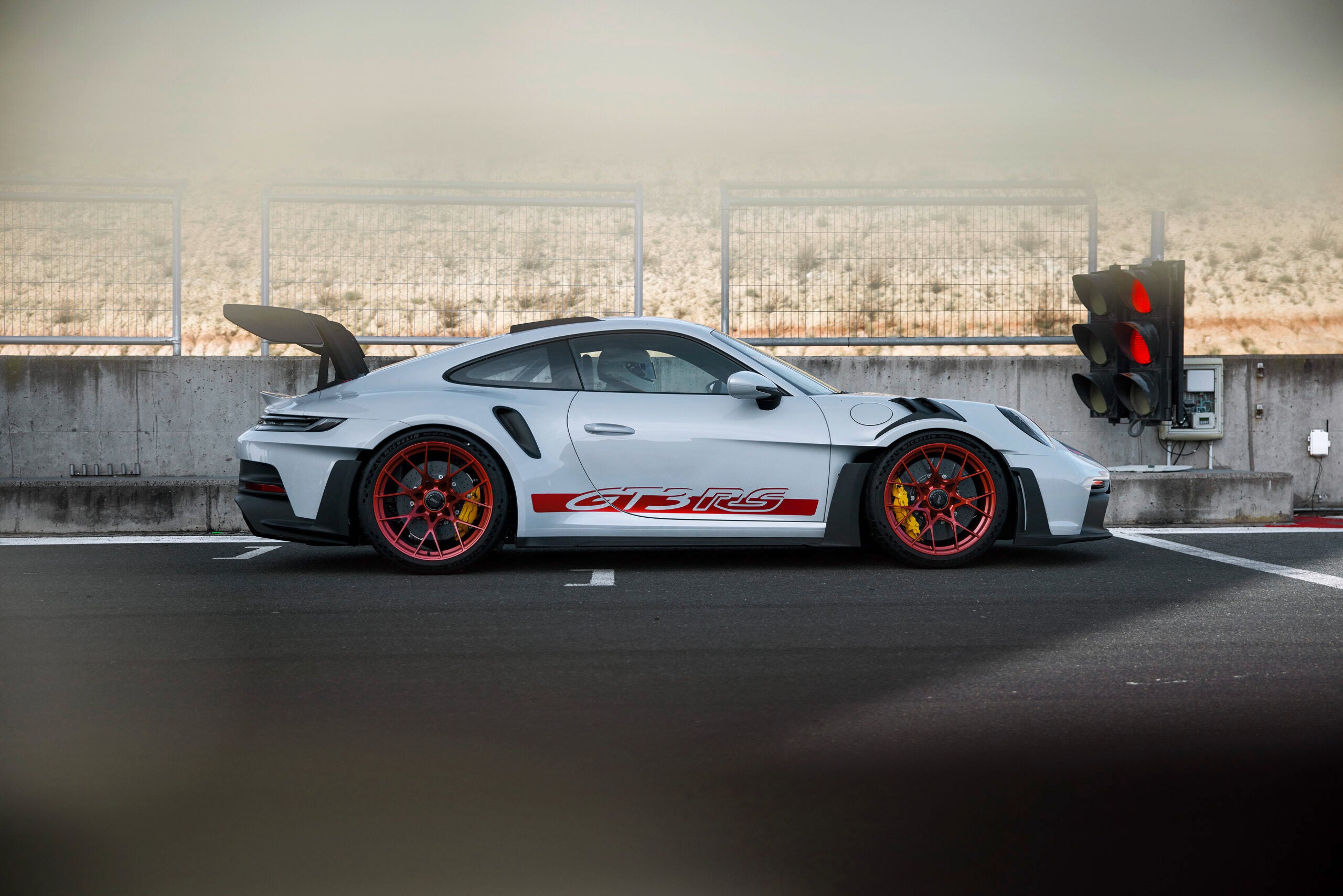The new 2023 Porsche 911 GT3 RS is here, and it's the most extreme version of Porsche's track day superstar to date. The 992 generation of Porsche's beloved track weapon is getting active aero for the first time, along with a 518-horsepower naturally aspirated flat-six, more carbon fiber components than ever before, and hardcore cooling systems that completely rule out any space for a frunk.
The GT3 RS is Porsche's most track-focused love letter to natural aspiration out there, with this version packing a 4.0-liter flat-six engine good for 518 horsepower. The same engine was carried over from the 992-gen 911 GT3 Cup and 911 GT3, but features a modest bump in power over the standard 911 GT3's 502 hp thanks primarily to a new set of camshafts with a hotter cam profile good for more power at higher RPMs. Like the 992 GT3, this one revs to 9,000 RPM—there's just more to enjoy up there thanks to that modified cam. It's mated to a seven-speed PDK with shorter gear ratios than the GT3 that have been optimized for track use. Underbody air intakes help keep the PDK cooler than ever.
All in all, it reaches 0 to 60 mph in just 3.0 seconds—0.2 less than the GT3. Top speed is 184 mph in seventh gear.
Porsche says most of its upgrades to the GT3 RS are in cooling, chassis and aerodynamic upgrades, and they weren't joking. This is the first roadgoing 911 to completely ditch its front cargo space to make way for a huge angled central radiator inspired directly by Porsche's 911 RSR and 911 GT3 R race cars.
Huge air vents in the hood allow air to flow through this front radiator, and then roof-mounted fins take over and direct this hot air coming through the radiator away from the rear intake. This new central radiator also takes the place of the three separate radiators Porsche used to use in the RS, which allowed Porsche to make room for additional aerodynamic elements in the front of the car, including some active aero.
The 992 GT3 RS has over 900 pounds of downforce at approximately 124 mph—twice that of the previous 991.2 GT3 RS and three times that of the current 992 GT3—thanks to the most intense combination of aerodynamic elements we've seen on a roadgoing Porsche to date. The real party pieces are the continuously adjustable wing elements in the front and on the rear wing.
For the first time ever on a production Porsche, you can get an F1-style drag reduction system, or DRS. Flaps in the front and in the giant swan-neck wing close off under braking to shut off some of the airflow like an air brake, and then open back up under acceleration to let more air through, thus reducing drag for more high-speed sections. Drivers can open this flap with the push of a button within certain set parameters determined by Porsche.

Another first is the height of the rear wing, where the upper edge sits higher than the car's roofline for the first time ever on a production Porsche. It has a fixed main wing with a hydraulically adjustable upper blade that serves as part of the car's DRS, and is larger than the previous 991.2 GT3 RS's rear wing in all dimensions.
Additionally, the GT3 RS features a front spitter, side blades on the front fascia and behind the rear wheel, and a massive rear diffuser that's an upgraded version of the one already on the 992 GT3. Side blades on the front fascia help direct the air outwards. For the first time ever, the giant air scoops in the rear side panel are for aerodynamics only—not part of the engine's air intake systems.
Front louvered fender vents are designed to keep the car's nose planted at speed by reducing air pressure in the fender wells. Airflows through the front wheel arches are so powerful that Porsche modified components of the double-wishbone front axle to teardrop shapes in order to take further advantage of them, increasing downforce by 88 lbs at the car's top track speed. These double-wishbone front-axle links are even longer, too, as the car sports a 1.14-inch wider front track width than its predecessor.
Aerodynamics are so important to this latest GT3 that Porsche said its engineers worked overtime to reduce pitch under acceleration and braking in order to keep the balance of downforce consistent no matter what the car is doing. They moved the front ball joint of the lower trailing arm lower on the front axle, modified rear spring rates and tweaked the driver assistance systems and rear-axle steering to match.
All in all, Porsche says the 992 GT3 RS can generate 1,895 lbs of downforce at 177 mph, which is the total weight of a Porsche 356 A.
Inside, you'll notice that the steering wheel now sports a button for DRS plus four rotary dials for drive mode settings, whereas the 992-gen GT3 just packs one rotary control. The GT3 RS offers three driving modes: Normal, Sport and Track, with Track allowing you to individually adjust vital suspension settings on the fly.
Rebound and compression settings on the front and rear axles are all separately adjustable, plus the driver can adjust the rear differential using a rotary dial on the steering wheel. Graphics on the instrument cluster visually confirm what settings you're tweaking from the wheel, and as with the standard 992 GT3, you can reduce the seven-inch side displays to only show essential information if so desired. The center of the dashboard, as it should be, is still an analog tachometer.
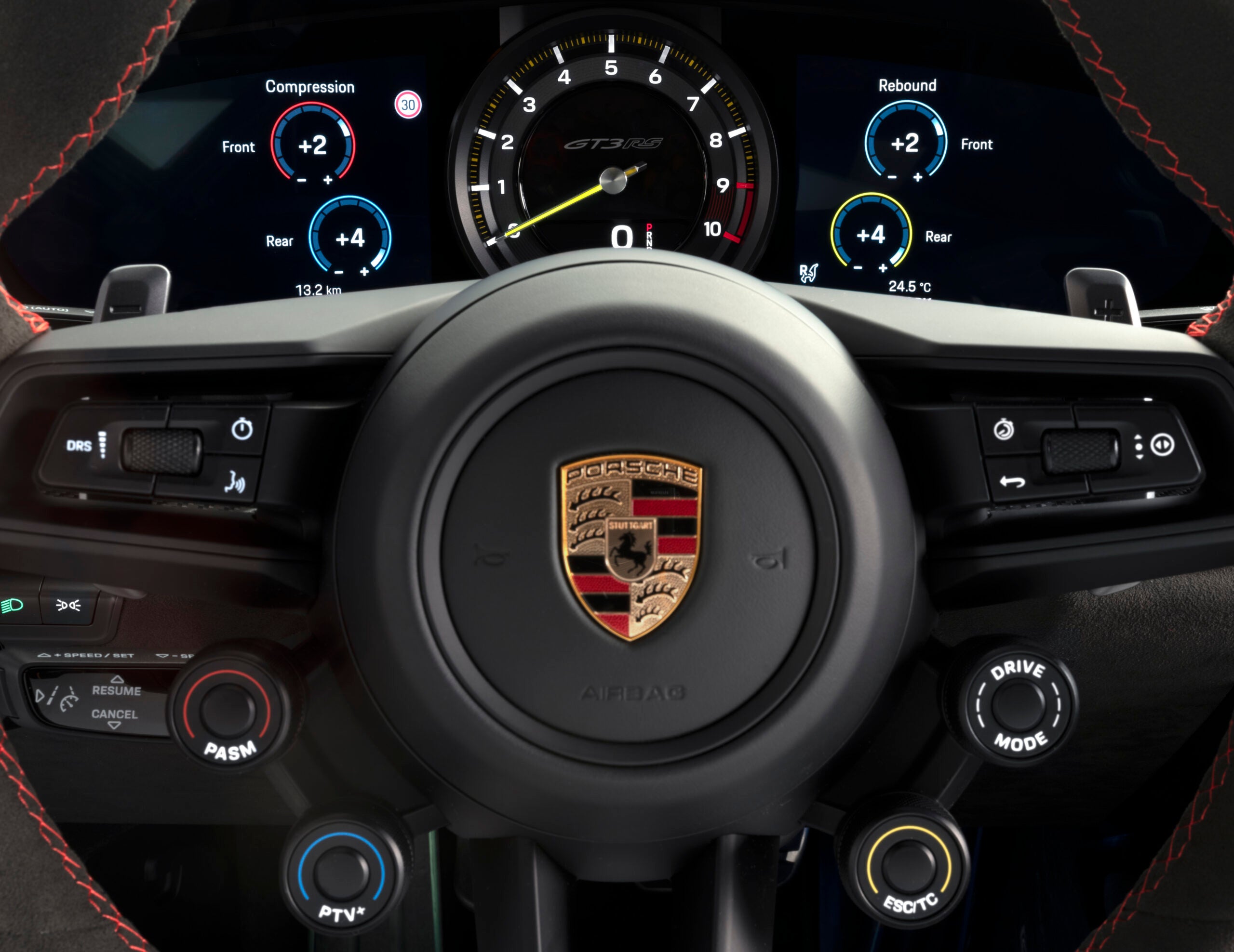
The use of lightweight materials was huge in this latest GT3 RS, as always, with this newest 992 model weighing just 3,268 lbs. For the first time ever, the car will comes with doors made of carbon fiber reinforced plastic (CFRP), with CFRP also being used for the roof, front quarter panels, hood and bucket seats.
The GT3 RS also features larger six-piston brakes with slightly thicker rotors than those found in the GT3 as well.
If you'd like people to see more of that carbon fiber, spring for the even more hardcore Weissach package that exposes the carbon fiber panels on the roof, hood, parts of the rear wing and parts of the side mirrors. This package also comes with magnesium centerlock wheels that shed 17.6 lbs from the car, CFRP anti-roll bars, CFRP rear coupling rods and a CFRP rear axle shear panel. The PDK paddle shifters also get an upgrade that gives them a perceptible click when the gear changes thanks to a magnet inside.
Expect the new GT3 RS to hit dealerships in Spring 2023 with a starting price of $225,250 including processing, delivery and handling fees.
This post originally cited information from photos that leaked on Facebook and Instagram ahead of the car's debut. It has since been updated with information from the car's official debut, which you can watch here on YouTube.
Got tips? Email the author: [email protected]



